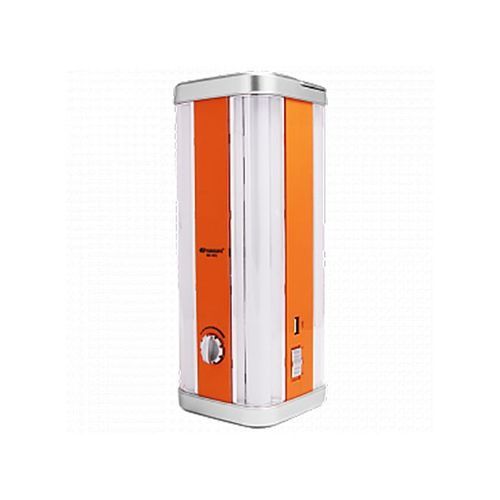Understanding Emergency Lights: A Guide for Kenyans

Introduction
The landscape of emergency lights in Kenya has undergone significant transformation over the past few decades. Traditionally, Kenyans relied heavily on lantern lights and torches to navigate power outages and other emergencies. Lanterns, often fueled by kerosene, were a common sight in many households. However, their use was fraught with challenges. Kerosene lanterns posed fire hazards, emitted soot, and other pollutants, and required a constant supply of fuel, which could be both costly and difficult to obtain, especially in remote areas.
Torches, which ran on batteries, presented their own set of limitations. The frequent need to replace batteries not only added to the financial burden on households but also raised environmental concerns due to improper disposal of used batteries. Moreover, the light output of traditional torches was often insufficient for comprehensive illumination, making them a less effective option during prolonged power outages or in larger spaces. As we delve deeper into the various aspects of emergency lighting in this comprehensive guide, it is essential to recognize the pivotal role that technological advancements have played in transforming how we manage and respond to emergencies
What Are Emergency Lights and Their Benefits?
Emergency Lamps are rechargeable, battery-operated devices specifically designed to provide illumination in the event of power outages or emergencies. These lights have become an essential component of modern households and businesses, ensuring that life can continue smoothly even when the main power supply is interrupted. Unlike traditional lighting solutions such as kerosene lanterns or disposable battery-powered torches, emergency lights offer a more reliable and sustainable option.
- One of the significant benefits of emergency lights is their cost-effectiveness. Once installed, these lights incur lower operational costs, as they do not require frequent purchases of kerosene or replacement batteries. This translates to substantial long-term savings for consumers.
- Additionally, the reduced need for maintenance further contributes to their economic advantage. Emergency lights are built to be durable, with many models designed to last for several years with minimal upkeep.
- Enhanced safety is another critical advantage of using emergency lights. In situations where power outages are frequent, having a dependable source of light is paramount.
- Emergency lights can prevent accidents and injuries by ensuring that visibility is maintained, particularly in high-risk areas such as staircases and corridors. Furthermore, these lights are environmentally friendly, as they eliminate the need for kerosene, which emits harmful fumes and contributes to indoor air pollution.
- Emergency lights also stand out for their sustainability. Unlike traditional torches that require regular battery replacements, emergency lights are designed to be recharged, reducing the consumption of disposable batteries. This not only lowers waste production but also promotes environmental conservation. Given that emergency lights do not rely on non-renewable resources like kerosene, they present a greener alternative for everyday use.
Comparing Emergency Lights to Lanterns and Torches
When evaluating the efficiency and practicality of emergency lights in comparison to traditional lanterns and torches, several critical factors stand out.
- First and foremost, emergency lights are notably more cost-effective over time. While the initial purchase price of an emergency light might be higher than that of a basic torch or kerosene lantern, the long-term savings are substantial. This is primarily due to the absence of consumables such as kerosene for lanterns or disposable batteries for torches. Emergency lights are typically rechargeable, meaning they can be used repeatedly without the ongoing expense of replacement fuels or batteries.
- Safety is another significant advantage of emergency lights. Traditional kerosene lanterns pose considerable fire hazards and emit toxic fumes, which can be detrimental to health, particularly in enclosed spaces. In contrast, emergency lights eliminate these risks entirely. They provide a reliable light source without the danger of combustion or the release of harmful substances, making them a safer option for households, especially those with children or elderly members.
- Moreover, the convenience and eco-friendliness of emergency lights cannot be overstated. The rechargeable nature of these lights means they can be easily powered up using standard electrical outlets or solar energy, depending on the model. This reduces the need for frequent battery replacements, which not only saves money but also minimizes environmental impact by reducing battery waste. On the other hand, most torches require regular battery changes, leading to recurring expenses and contributing to environmental degradation through the disposal of used batteries.
Key Features to Look for in a Good Emergency Light
When purchasing an emergency light, it is crucial for consumers to consider several key features to ensure they are making a sound investment.
1. Battery life
One of the most important attributes is battery life. A reliable emergency light should have a long-lasting battery to provide consistent performance during power outages or other emergencies. Consumers should look for models that offer extended battery life, as this ensures the light will remain operational for extended periods without needing frequent recharges.
2. Brightness levels
Brightness levels are another critical feature. Emergency lights should offer adjustable brightness settings to cater to different needs. A good emergency light typically provides multiple brightness levels, allowing users to conserve battery life by using lower settings when maximum brightness is not necessary. Look for models with LED bulbs, as they are energy-efficient and provide bright illumination.
3. Durability
Durability is equally important, especially in emergency situations where the light may be exposed to harsh conditions. Choose a light that is made from robust materials, and is water-resistant and shockproof. This ensures the light can withstand accidental drops or exposure to moisture, enhancing its longevity and reliability.
4. Portability
Portability is another factor to consider. An emergency light should be lightweight and compact, making it easy to carry and store. This is particularly important for those who may need to move around during an emergency or for those who plan to use the light in various locations.
5. Charging options
Charging options are also significant. Emergency lights with multiple charging methods, such as solar panels, USB ports, and hand cranks, offer greater flexibility and reliability. Solar charging is particularly useful for outdoor use, while USB charging is convenient for everyday home use. Hand crank options provide a backup when other power sources are unavailable.
Conclusion
The transition from traditional lighting methods to modern emergency lights is a wise choice for anyone looking to enhance their emergency preparedness. As you consider making a purchase, it is essential to weigh the features and benefits of different models to find the one that best suits your needs. Look for emergency lights that offer a balance of performance, durability, and cost-effectiveness. Investing in a high-quality emergency light is not just a practical decision; it is a proactive step towards ensuring safety and convenience in times of need. By understanding the key aspects discussed in this guide, you can make an informed decision and choose an emergency light that provides peace of mind and dependable performance when it matters most.





